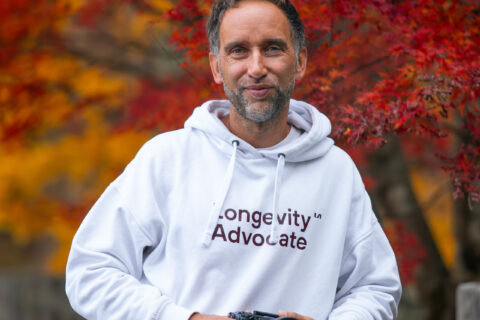An analysis of employer behavior by Workopolis shows that “most employers spend less than 11 seconds on a resume before shortlisting it for further review or rejecting it and moving on.” This means that job candidates have a few seconds to make a great first impression. A resume doesn’t guarantee a job. But a well written resume can boost a candidate’s chances.
When applying for a job, what a potential employer sees first is your resume. The resume definition and etymology are simple – it comes from the French word “résumé” and literally means “summary.” That is why most resumes are limited to one or two pages and only include relevant information about your education, work experience, and personal life.
A good hiring manager may need only a minute to scan your document, so it is vital to learn how to write a resume that stands out. Here, you’ll find what to put on your job resume and how to make the most of it.
Types of resumes
You can arrange the document in different ways, but generally, there are three main formats.
Reverse-chronological
In a reverse-chronological resume, you list all of your previous jobs, starting from the most recent and making the earliest one the last. If you have a rich work history, include only those jobs that are relevant to the position you are interested in.
Functional
This type of resume focuses on your skills and abilities relevant to the job position. This approach may be most useful for people who don’t have a lot of work experience or are switching careers.
Combination
Most resumes include information about your professional experience, acquired skills, and personal traits. It is a good way to show what you bring to the position and include the important details.

Pro Tip: Resumes for Creatives
If you are looking for a job in the media industry, a video CV may be more appropriate. This doesn’t mean you shouldn’t have a text document, but a video can help you get noticed faster. Another way to draw attention to your candidacy is to create a visual resume that you can add to your LinkedIn profile or other social media accounts. Again, you should always include a text resume too. Photographers, designers, architects and other artistic professionals can also win from turning their portfolio into a digital interactive flipbook.
Resume sections
Depending on your industry, the contents of your resume may vary. We’ve listed the most important elements that you should always include.
Contact information
State your full name and include all the ways a hiring manager can get in touch with you: telephone, email, your LinkedIn profile.
Education
Include information about your higher education, any graduate programs, additional courses, and other relevant training you’ve had.
Work experience
Make a list of all the places you’ve worked at and all the positions you’ve had. Be sure to mention all your responsibilities and achievements in those jobs. You may not need to include every employer and position, particularly if the list is long or your career has changed significantly over time. But be sure to include positions relevant to the one you’re applying for.
Professional skills
It is important to highlight your professional capabilities and how they will be useful in the job you’re applying for. You can divide them into hard (practical) and soft (interpersonal) skills.
Additional information
You can mention your hobbies and interests if they match the corporate culture of the company you’re applying for. You can also describe any relevant non-work experience or volunteer work. But keep it short – save most of this information for the interview.
Tips on how to create a resume
Don’t send the same resume to different companies.
If you’re applying for different positions, or even careers, tweak your resume: rearrange the structure, emphasize different angles of your personality, and choose relevant skills and previous positions to include in the document.
Proofread your text.
You can use software spell checkers, but the best way to find flaws in your writing is to ask someone to read it. They may see something you’ve missed and give their feedback and advice.
Save your resume in PDF format.
A Word document may work too, but recognize that different computers may use different character encoding and may not support the fonts you’ve used. With a PDF, you can add images, open it on any device, and it looks finished – that is why it is a more appropriate format for a resume. You can convert your Word files into PDFs using online tools like PDFChef, PDF2Go, or iLovePDF if you don’t have special software installed on your device.
Most common resume mistakes
Here are some of the reasons candidates are rejected before they are even considered for an interview.
Spelling and grammar errors
The number one reason for a recruiting manager to toss out your resume is poor copy editing. If there are many typos and grammar errors, they will likely not bother reading it or want to know you better. If you’re unsure of your spelling skills, ask more experienced friends or family members to help you with the resume.
Cliches
Cliches are standard phrases that make your resume and you sound boring and unoriginal. Try to find better ways to say that “you are hard-working, creative, disciplined, and work well in a team.” You can look up examples of good resumes and use them for inspiration, but don’t copy them word for word.
Misleading information
The worst thing you can do is to lie on your resume. You can easily get caught by a hiring manager if you make up your work history or can’t prove your skills or knowledge. It can seriously damage your reputation, so don’t risk it, and be as honest as possible.
It’s important to pay close attention to what you include in your resume. The choice of words and style are also key. Make sure you stick to only relevant facts and don’t sound too hackneyed – and hopefully you’ll be on your way to the interview stage!
Alina Kralkina is a content manager in Movavi Software Inc., a company that develops easy-to-use and effective software for Windows and Mac. She believes that technology is one of the most popular topics in our time. And that’s why she likes to write about its simplicity in the workplace.
© YFS Magazine. All Rights Reserved. Copying prohibited. All material is protected by U.S. and international copyright laws. Unauthorized reproduction or distribution of this material is prohibited. Sharing of this material under Attribution-NonCommercial-NoDerivatives 4.0 International terms, listed here, is permitted.













